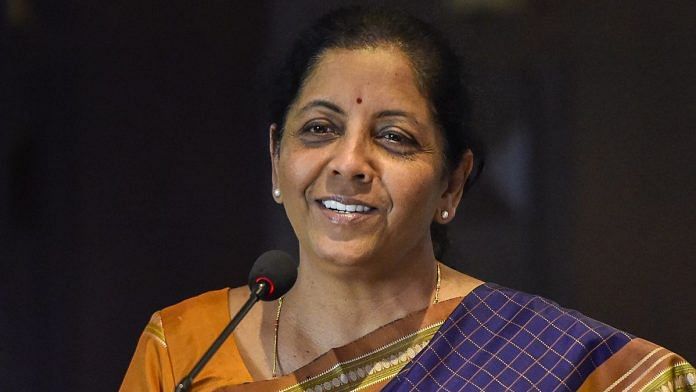New Delhi: Finance Minister Nirmala Sitharaman’s announcement Thursday that banks will hold loan melas or ‘shamiana’ meetings in more than 400 districts across India harks back to a similar scheme introduced under Indira Gandhi’s prime ministership in the 1980s, when the government wanted to boost rural credit.
In the early 1980s, Janardhan Poojary, the Congress leader from Karnataka and Minister of State for Finance, organised loan melas under Indira Gandhi’s 20-point scheme.
Fairs were held in stadiums where public sector banks (PSBs) doled out mass loans to consumers free of security. However, the scheme lacked structure and implementation, and ignored the long-term welfare of the banking sector.
Also read: 50 yrs of nationalisation: Is Modi govt worsening PSU banks’ problems or resolving them?
Purpose of the melas
The idea of popularising cheap credit started in 1972, after Indira Gandhi’s Differential Rate of Interest (DRI) scheme, which made banks allocate at least 1 per cent of loans to farmers and weaker sections of society at highly-subsidised interest rates. The point of the melas was to link villagers directly with banks, to boost rural spending and, thereby, rural consumption.
Also, this was a time when corruption in lending was at its peak, and banks favoured big industrialists. In Poojary’s words: “None of the banking facilities were reaching the poor. People had to bribe bank officials to get loan.”
And so, the melas were meant to make lending more transparent, and also to let the poor take advantage of the banks, just as the rich had been doing all along.
Poor implementation
Once the melas were initiated, however, they did not sit well with all sections of society, and even stirred up mobs of loan-seekers, who were sometimes confused about the dates of the melas owing to lack of publicity and bad planning.
The process of obtaining a loan caused a lot of confusion when banks came up with the idea of using ration cards for identification. This provision kept changing — certain bank branches insisted that ration cards must be stamped and some went a step further, asking for passport-sized photographs of applicants.
People started to believe that ration cards could guarantee their loan application and since the scheme targeted the poorest of the poor, many spent money photo-copying their ration cards and ending up not securing a loan. It also didn’t help that 87,180 fake ration cards were eventually detected in Bangalore (as it was then named) alone.
At first, there was a lot of anxiety among banks to fulfil the initial quotas of loans, but after stamping ration cards, most exceeded their quotas. Syndicate Bank’s 18 branches in Bangalore, for example, had an initial quota of 900 applications but ended up distributing loans worth Rs 65.69 lakh to 1,981 applicants. This is what precipitated people to think ration cards were the key to getting loans up to Rs 5,000.
Fall-out of the scheme
The exercise left banks with huge bad debts. “The losses incurred as a result of the melas go into still uncounted thousands of crores,” wrote M.B. Chande in his book Betrayal of Indian Democracy.
This bad debt resulted in the implementation of stricter collateral requirements and increased margins on the collateral.
Also read: Worry about your financial illiteracy, not your bank deposits under Modi govt




For one existing NPA loan, 5 new NPA loans will be distributed under new economy recovery plan.
No new NPAs till 31.3.2020. Very fair fisclosire of concealment.
Someone here has been banging the desks for Modi II = Indira Gandhi II parallels. If true, it will end up in a 1975-77 situation again.
Somehow, it always seem when a piss poor PSU do in giving out loans to crook with poor collateral, it is OK but if they do a fraction of that loan program in rural area, it becomes a risky program The country media and its journalists badly need a mindset change. A PNB losing ,money to Modi is as stupid as SBI losing money to a farmer in Economic sense.